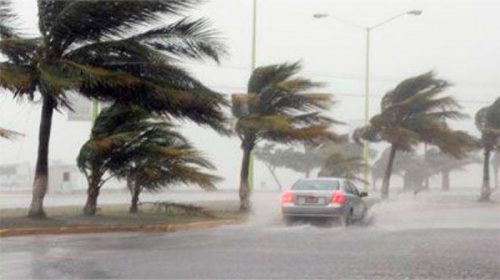
September 8, 2017
VIDEO: How to Survive a Hurricane


September 8, 2017

Don’t wait until a storm is heading your way! Survive a hurricane with these safety precautions.
Step 1: Plan ahead Plan ahead. Know the location of local shelters and how you’ll evacuate if you don’t have a car. If you have family members with special medical needs, ask local officials if there’s a registry so they get help in the event of power outages. Pick a place for family members to meet in case you become separated, and designate an out-of-town friend as the person everyone calls to report that they’re safe. Get flood insurance if you don’t already have it.
Tip Make sure you know how to shut off electricity, gas, and water in case you’re instructed to do so.
Step 2: Be prepared Have the following supplies on hand at the start of hurricane season: a 3-day supply of water that provides 1 gallon per person per day; a 3-day supply of non-perishable food that doesn’t require cooking; a flashlight and extra batteries; a battery-powered radio that can receive broadcasts from the National Oceanic and Atmospheric Administration; a first-aid kit; and a 7-day supply of medications.
Tip The Atlantic and Central Pacific hurricane season runs from June 1 to November 30; the Eastern Pacific is from May 15 through November.
Step 3: Get ready If a hurricane warning is issued — meaning one is expected in the next 36 hours — bring in anything that can be tossed around by the wind; close and board up all windows and doors with 5/8″ marine plywood, unless you have hurricane shutters; clear rain gutters and downspouts; trim trees and shrubs; put your refrigerator and freezer on the coldest setting; and fill your car’s gas tank in case you’re ordered to evacuate.
Step 4: Go to a safe place If you live on the first or 2nd floor of a high rise, make plans to take refuge with neighbors between floors 3 and 10 when the storm begins. Residents who live above the 10th floor should evacuate, as should mobile home dwellers and anyone living on a floodplain, near a river, or on an inland waterway.
Step 5: Do last-minute preparations Shortly before the storm is expected to start, fill your bathtub with water so you have an extra supply on hand. Unplug small appliances and sensitive electronics, and turn off propane tanks.
Step 6: Ride out the storm When the storm starts, stay away from windows and glass doors and avoid using the phone. Go to your home’s lowest level and stay in an interior room, closet, or hallway. Have a mattress or pillow to protect your head. Monitor weather conditions on your radio and don’t leave your safe place until local officials say it’s okay to do so.
Step 7: Avoid post-storm dangers If you lose electricity, keep circuit breakers turned off until power is restored, then check for frayed wires. If you see any, call the power company. Leave the house immediately if you smell gas. If you’re returning home, don’t enter your house if floodwaters remain around the building; you see loose power lines or structural damage; or you smell a gas leak. If you have any safety concerns at all, stay elsewhere until your home is checked by a building inspector or structural engineer.
Via. YouTube channel HowCast